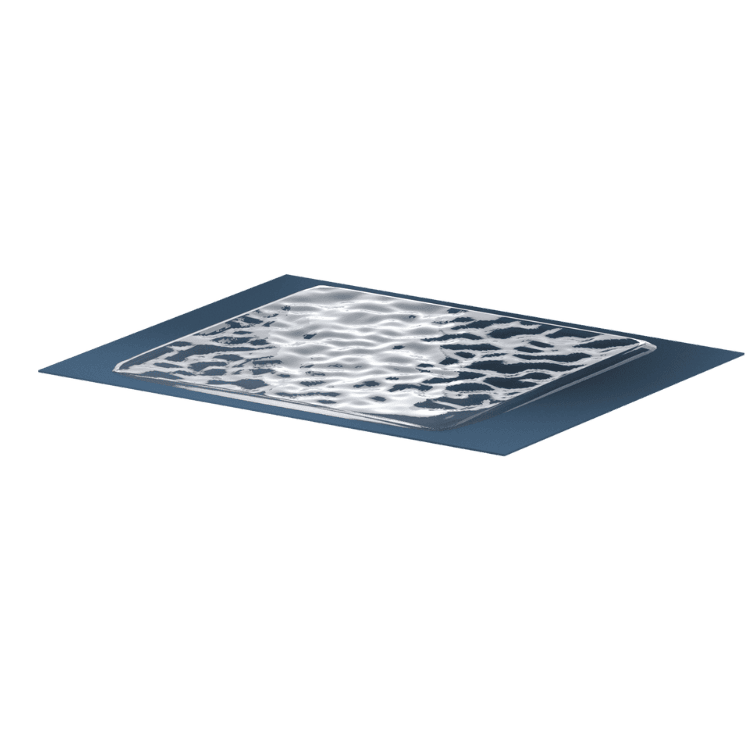Coating is a surface treatment which consists of applying a liquid coating (adhesive, paint, lacquer, oil or resin) to a flexible or rigid substrate (paper, fabric, plastic film, metal foil, etc.).
This process gives the material specific properties, such as mechanical strength, chemical barrier, thermal protection and surface functionalisation.
The coating process is based on precision variables that directly influence the quality of the coating:
Substrate feed speed
Viscosity and density of the liquid
Application angle
Surface tension of the material

The coating process is based on precision variables that directly influence the quality of the coating:
Substrate feed speed
Viscosity and density of the liquid
Application angle
Surface tension of the material
Coating can be adapted to numerous industrial sectors requiring specific surface performances:
Technical films for the automotive industry (insulation, noise reduction, thermal resistance).
Aeronautical components with high-performance protective coatings.
Insulating and conductive films.
Coated substrates for batteries and electronic components.
Coated materials for waterproofing and protecting surfaces.
Decorative and functional solutions for wall and floor coverings.
Barrier packaging (against oxygen, moisture and grease).
Medical devices with functional coatings (technical adhesives, antibacterial coatings).
With more than 40 years' experience in the conversion and surface treatment of materialsADDEV Materials offers :
A comprehensive technical expertise coating on various substrates.
From state-of-the-art industrial equipment (engraved cylinders, controlled drying ovens).
An approach eco-responsible with optimised solvent management and the development of sustainable solutions.
From made-to-measure solutionsadapted to the technical, regulatory and market constraints of each customer.
Coating consists of applying a liquid to a substrate, while the lamination assembles several layers of material. The two processes complement each other.
Paper, plastic films, technical fabrics, metal foils: coating can be adapted to a wide variety of substrates.
It ensures consistent, repeatable application, allowing precise control of coating thickness.
Yes, coating is a highly customisable process that can be used to incorporate mechanical, chemical or aesthetic properties.
Key markets include mobility, energy, electronics, construction, packaging and medical.